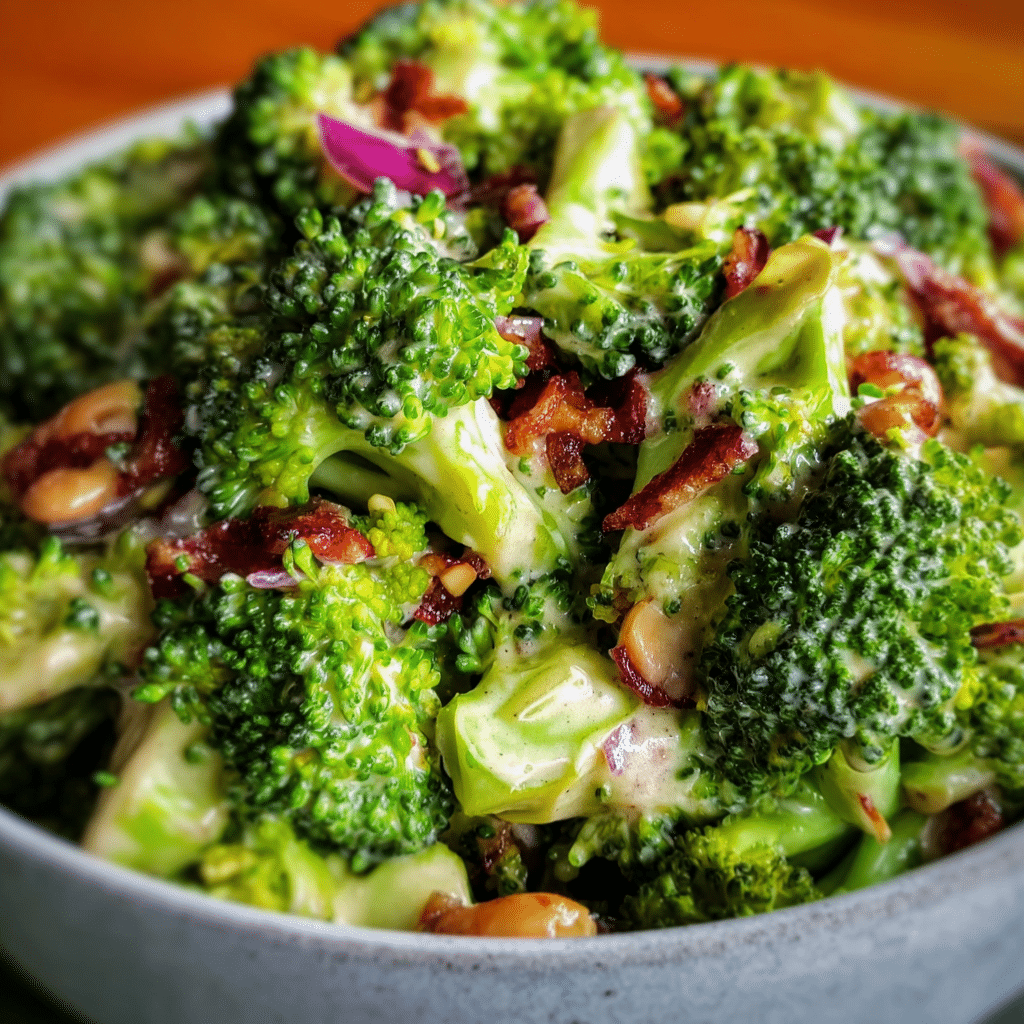Creamy butternut squash has become a beloved staple in many households, particularly as the crispness of autumn sets in. I remember the first time I encountered this velvety soup—it was during a chilly October evening at a cozy café nestled in the heart of my hometown. The air was filled with the scent of roasted vegetables, cinnamon, and something that I later learned was the exquisite aroma of butternut squash simmering away. The moment I took my first spoonful, I was captivated. The richness of the soup enveloped me like a warm hug, and I immediately knew I had to recreate that experience in my own kitchen.

As I embarked on my culinary journey to master creamy butternut squash soup, I delved into the cultural tapestry that surrounds this dish. Butternut squash, a member of the gourd family, has been a part of human diets for centuries, particularly in North America. Native Americans were among the first to cultivate this versatile vegetable, using it not only as a food source but also in traditional ceremonies. Its sweet, nutty flavor and vibrant color made it a favorite ingredient in various dishes. Over time, the creamy soup we cherish today has evolved, incorporating influences from different cuisines while maintaining that comforting essence.
The Story Behind This Recipe
What makes my version of creamy butternut squash soup special is the blend of flavors and textures that I’ve perfected through experimentation. I started with the classic recipe, which typically includes roasted butternut squash, onions, garlic, and vegetable broth. However, I felt something was missing. After several trials, I decided to add a hint of coconut milk, which not only enhances the creaminess but also brings a subtle sweetness that pairs beautifully with the squash. Fresh herbs like thyme or sage also add a layer of complexity that elevates the soup from ordinary to extraordinary.
This recipe is perfect for busy families looking for quick dinner solutions. It can be made in under an hour, and the ingredients are straightforward, requiring minimal preparation. Plus, it’s a fantastic way to sneak in some vegetables for those picky eaters! The best part? It can be made in large batches and stored in the refrigerator or freezer, making it an ideal meal prep option for the week ahead. Imagine coming home after a long day to a warm bowl of creamy butternut squash soup, ready to be enjoyed.
Seasonally, this dish shines brightest in the fall and winter months when butternut squash is in abundance. Its comforting warmth is like a soft blanket against the chill of the season, and it pairs wonderfully with crusty bread or a light salad for a complete meal. But let’s not limit ourselves—this soup is delightful year-round, especially for those who enjoy the sweet, earthy flavors of squash.
There’s an emotional connection for many of us to dishes like creamy butternut squash soup. It evokes memories of family gatherings, cozy nights, and the satisfaction of creating something nourishing. Whether it’s a cozy weeknight dinner or a special occasion, this soup is a reminder of the joys of cooking and the comfort of sharing a meal with loved ones.
In this article, you’ll learn how to create your own creamy butternut squash soup, explore various adaptations and tips for success, and discover the rich history and cultural significance behind this beloved dish. So grab your apron, and let’s dive into the world of creamy butternut squash soup!
The Rich History and Cultural Significance of creamy butternut squash
To truly appreciate creamy butternut squash soup, we must explore its rich history and cultural significance. The origins of butternut squash date back to ancient times, with archaeological evidence suggesting that this versatile gourd was cultivated by Indigenous peoples in the Americas long before European settlers arrived. Native Americans not only grew butternut squash as a staple crop but also revered it for its nutritional value. It was often included in a triad of essential crops alongside corn and beans, collectively known as the “Three Sisters.”
Origins and History
The butternut squash that we know today is a modern hybrid of older squash varieties, developed in the 1940s by a horticulturist named Charles Leggett. This sweet, nutty squash quickly gained popularity due to its long storage life and versatility in cooking. It is believed that the creamy soup we enjoy today originated in the New England region of the United States, where the cold winters made root vegetables like squash a vital part of the diet. Recipes for butternut squash soup began appearing in cookbooks in the late 20th century, often highlighting the comforting nature of the dish.
As the culinary landscape evolved, so too did the variations of creamy butternut squash soup. In some regions, chefs began incorporating international flavors, such as curry spices or coconut milk, to put a unique twist on the classic recipe. These adaptations not only reflect the growing diversity of food culture in America but also highlight how a humble soup can adapt to various palates and preferences.
Cultural Significance
This soup is often served during Thanksgiving and harvest celebrations, symbolizing warmth and gratitude. It’s a dish that embodies the spirit of the season, bringing families and friends together at the dinner table. Furthermore, as interest in plant-based diets and healthy eating continues to rise, creamy butternut squash soup has become a popular choice for those seeking nutritious, satisfying meals. Its creamy texture and vibrant color make it a visually appealing dish, often gracing the tables of festive gatherings and holiday feasts.
Famous chefs and restaurants have also contributed to the popularity of butternut squash soup, offering their own signature twists. From fine dining establishments to local cafes, variations abound, showcasing the adaptability of the recipe. Some chefs add roasted garlic or sprinkle toasted pumpkin seeds on top for added crunch, while others incorporate exotic spices like ginger or nutmeg to elevate the flavor profile.
Nutritional Benefits
Beyond its delightful taste, creamy butternut squash soup is packed with nutritional benefits. Butternut squash is rich in vitamins A and C, both of which are essential for maintaining a healthy immune system, skin, and vision. Additionally, it contains dietary fiber, which aids in digestion and helps maintain a healthy weight. The soup can easily be made vegan or vegetarian, making it suitable for various dietary preferences.
Moreover, the creamy texture of the soup can be achieved without excessive dairy or fat, especially when using alternatives like coconut milk or cashew cream. This makes it a guilt-free pleasure that satisfies cravings without compromising health goals. Whether enjoyed as a starter or a main dish, this soup is not only delicious but also a nourishing addition to any meal.
As we celebrate the history, cultural significance, and health benefits of creamy butternut squash soup, it becomes clear that this dish is more than just a recipe; it is a heartwarming experience that connects us to our roots and each other. So the next time you warm up a bowl of this delightful soup, remember the rich tapestry of history that accompanies each spoonful.
Essential Ingredients for Perfect creamy butternut squash
When it comes to crafting a bowl of creamy butternut squash soup, the ingredients you choose can make all the difference. Each component contributes not only to the flavor but also to the texture and richness of the soup. Let’s dive into the essential ingredients you’ll need to create a velvety, comforting bowl of goodness.
Essential Ingredients
- Butternut Squash: 1 large (about 2-3 pounds)
- Onion: 1 medium-sized, chopped
- Garlic: 3-4 cloves, minced
- Vegetable or Chicken Broth: 4 cups
- Coconut Milk or Heavy Cream: 1 cup (for creaminess)
- Olive Oil: 2 tablespoons
- Salt: to taste
- Pepper: to taste
- Nutmeg: a pinch (optional, for warmth)
- Fresh herbs: like thyme or parsley for garnish (optional)
Let’s break down the role of each ingredient. The star of the show, butternut squash, is not only sweet and nutty; it’s also packed with vitamins A and C, making it a nutritious choice. When selecting your butternut squash, look for one that feels heavy for its size, has a firm skin, and is free from blemishes. A good quality squash will have a rich, deep orange color, indicating its ripeness and sweetness.
Next, the onion and garlic add a savory base that enhances the natural sweetness of the butternut squash. Onions should be firm and have a dry skin. Fresh garlic should be plump and free from any sprouts. These aromatics are essential for building depth of flavor in your creamy butternut squash soup.
Broth is crucial in any soup recipe, and here, it acts as the liquid base that brings everything together. You can use either vegetable or chicken broth depending on your dietary preferences. Homemade broth is fantastic if you have the time, but store-bought options can save you a lot of hassle. Look for low-sodium varieties to control the saltiness of your soup.
The creaminess in the soup can come from coconut milk for a dairy-free version or heavy cream if you want a richer texture. Coconut milk adds a subtle sweetness and tropical flavor, whereas heavy cream provides that luxurious mouthfeel. Always opt for full-fat versions for the best results. If you’re watching your fat intake, you can substitute with half-and-half or even yogurt for a tangy twist, but keep in mind this will alter the flavor profile slightly.
Olive oil is used to sauté the onions and garlic, enhancing their flavors and ensuring they caramelize beautifully. It’s best to go for extra virgin olive oil for its rich taste and health benefits.
As for seasonings, salt and pepper are essential but add them to taste. A pinch of nutmeg can elevate the soup by adding warmth and complexity, but it’s entirely optional. Fresh herbs make for a lovely garnish, adding color and freshness right before serving.
Print
Creamy Butternut Squash Recipe
Ingredients
- 3 pounds butternut squash – cubed
- 3 tablespoons olive oil
- 2 cups vegetable or chicken stock – more as needed
- 1 large carrot – peeled and chopped
- 1 green apple – peeled and chopped
- 1 red bell pepper – seeded and chopped
- 1 white or yellow onion – diced
- 1 stalk celery – chopped
- 1 tablespoon minced garlic
- 1 teaspoon salt – or to taste
- ¼ teaspoon pepper – or to taste
- ½ teaspoon smoked paprika – optional
- 2 15-ounce cans unsweetened coconut milk
- optional garnishes: dried cranberries, sunflower seeds, parsley or thyme, pepitas or roasted pumpkin seeds, black pepper, parmesan cheese, smoked paprika
Instructions
- In a large stockpot over medium-high heat, combine olive oil, butternut squash, carrot, apple, bell pepper, garlic, onion, and celery. Saute 3-4 minutes until garlic fragrant and onions are translucent.
- Add stock, salt and pepper, and smoked paprika (if using) and bring to a boil. Cook for 5-10 minutes over medium heat until veggies and squash are very tender.
- Stir in the coconut milk. Use an immersion blender to blend until smooth OR transfer in batches to a high powered blender and puree until smooth and creamy.
- Taste, add salt and pepper to taste if needed. Add a little more stock or water to thin if needed. Garnish as desired and serve.
Shopping Tips
When shopping for your ingredients, consider visiting local farmers’ markets, especially in the fall months when butternut squash is in season. Not only will you support local farmers, but you’ll also likely find fresher and more flavorful produce. If you’re shopping at a grocery store, try to pick squash that is heavy and unblemished. The season for butternut squash typically runs from early fall to late winter, so it’s a perfect choice for hearty autumn and winter meals.
For the herbs, fresh is always best when it comes to garnishing your creamy butternut squash soup. However, if you can’t find fresh herbs, dried herbs can work in a pinch. Just remember that dried herbs are more potent, so you’ll need less. A general rule of thumb is to use one-third the amount of dried herbs compared to fresh.
Substitutions and Alternatives
If you have dietary restrictions, there are plenty of substitutions you can make without sacrificing flavor. For a vegan version, stick with coconut milk and vegetable broth. If you’re looking for a low-carb option, you can use cauliflower instead of butternut squash, though the flavor will differ. For those who are lactose intolerant, almond milk or oat milk can be a suitable alternative to cream, though you might miss the richness that heavy cream provides.
Storage tips are essential for maximizing your ingredient’s lifespan. Butternut squash can be stored in a cool, dry place for up to a month. Once cut, store it in an airtight container in the refrigerator, where it should last about five days. Onions and garlic should be kept in a cool, dark place in mesh bags to allow them to breathe, while broth can be kept in the fridge for about a week or frozen for several months.
Finally, let’s talk cost-saving tips. Buying seasonal produce is not only fresher but also more affordable. If you find a great deal on butternut squash, consider buying in bulk and freezing some for future soups. Homemade broth made from vegetable scraps is an excellent way to save money while adding incredible flavor to your creamy butternut squash soup.
Detailed Step-by-Step creamy butternut squash Cooking Instructions
Now that you have gathered all your ingredients, let’s dive into the detailed cooking instructions for crafting a delightful bowl of creamy butternut squash soup. This step-by-step guide will ensure that you achieve the perfect texture and flavor while avoiding common pitfalls.
Preparation Steps
- Prep the Butternut Squash: Start by washing the squash thoroughly. To make peeling easier, I recommend microwaving it for 2-3 minutes to soften the skin slightly. Using a sharp vegetable peeler, peel the skin off, then cut the squash in half lengthwise and scoop out the seeds with a spoon. Cut the flesh into 1-inch cubes. This not only speeds up the cooking process but ensures even cooking throughout.
- Chop the Aromatics: Dice the onion and mince the garlic. Make sure your knife skills are sharp for a uniform chop, which will help everything cook evenly. I often like to run my knife through the garlic a few times to create a paste, which blends seamlessly into the soup.
- Measure and Prepare: Gather your broth, coconut milk or cream, spices, and herbs. Having everything pre-measured and ready to go (a technique called mise en place) will make the cooking process smoother and more enjoyable.
Cooking Process
- Sauté the Aromatics: In a large pot, heat the olive oil over medium heat. Add the chopped onion and sauté for about 5-7 minutes until translucent and fragrant. Then, add the minced garlic and sauté for another minute. Be careful not to burn the garlic as it can turn bitter.
- Add the Butternut Squash: Toss the cubed butternut squash into the pot, stirring to coat it with the oil and aromatics. This step helps to caramelize the squash slightly, enhancing its natural sweetness. Cook for about 5 minutes, stirring occasionally.
- Add the Broth: Pour in the vegetable or chicken broth, making sure the squash is fully submerged. Increase the heat to bring the mixture to a gentle boil, then reduce it to a simmer. Let it cook uncovered for about 20 minutes, or until the squash is fork-tender. This is where the magic happens, as the flavors meld together.
- Blend the Soup: Once the squash is tender, carefully transfer the mixture to a blender or use an immersion blender directly in the pot. Blend until smooth and creamy, adjusting the consistency with more broth if necessary. If using a traditional blender, be sure to let the steam escape to avoid splattering.
- Add Coconut Milk or Cream: Return the blended soup to the pot and stir in the coconut milk or heavy cream. This is where your soup transforms into that luscious, creamy butternut squash delight. Heat gently over low heat until warmed through, seasoning with salt, pepper, and a pinch of nutmeg to taste.
Final Assembly
- Serve the Soup: Ladle the soup into bowls and garnish with fresh herbs, a drizzle of olive oil, or a sprinkle of toasted pumpkin seeds for added texture. You can also serve it with a slice of crusty bread or a light salad for a complete meal.
- Storing Leftovers: If you have leftovers, allow the soup to cool completely before transferring it to an airtight container. It can be stored in the refrigerator for up to a week or in the freezer for up to three months. Just remember to label your containers with the date!
- Reheating: When reheating, you may need to add a splash more broth or water to bring back the creamy consistency, as soups can thicken when stored. Heat gently on the stove or in the microwave, stirring frequently.
Common mistakes to avoid include not sautéing the aromatics long enough or blending the soup while it’s too hot, which can lead to a messy kitchen. Take your time and enjoy the process! If you want to elevate your soup, consider adding a hint of fresh ginger or a dash of cayenne pepper for a kick. With these detailed instructions, you’ll be able to create an unforgettable creamy butternut squash soup that will warm your heart and satisfy your taste buds.

Professional Tips and Techniques for creamy butternut squash
When it comes to making the perfect creamy butternut squash soup, there’s a wonderful blend of art and science involved. I remember the first time I made this soup; it was during a chilly autumn evening, and the aroma of roasting squash filled my kitchen. It was comforting and cozy, just like the season itself. Through my culinary journey, I’ve gathered some professional tips and techniques that will elevate your creamy butternut squash soup to a level that will impress your family and friends.
Professional Techniques
To start, let’s talk about the butternut squash itself. Selecting the right squash is crucial; look for ones that feel heavy for their size and have a matte skin. Shiny skin indicates that the squash is under-ripe. Once you’ve selected your squash, it’s time to prepare it. Cutting butternut squash can be a bit tricky due to its tough exterior. I recommend using a sharp knife and a sturdy cutting board. Cut off both ends first, then slice it in half lengthwise. You can scoop out the seeds with a spoon, or if you’re feeling adventurous, save them for roasting later!
Roasting is one of the key techniques to developing the rich, sweet flavors of creamy butternut squash. Toss the squash halves with olive oil, salt, and pepper before placing them cut-side down on a baking sheet. Roast at 400°F (200°C) for about 30-40 minutes until tender and caramelized. The caramelization process adds depth to the flavor of your creamy butternut squash soup.
For a smoother texture, consider using an immersion blender instead of a traditional blender. This tool allows you to blend the soup directly in the pot, reducing the mess and making it easier to achieve that creamy consistency. If you do use a traditional blender, make sure to let the soup cool slightly before blending to avoid any mishaps with hot liquid.
Troubleshooting Guide
Even with the best intentions, sometimes things can go awry. If your soup turns out too thick, simply add more broth or water until you reach your desired consistency. Conversely, if it’s too thin, consider simmering it for a few more minutes to reduce the liquid. If the flavor isn’t quite right, a touch of salt or a splash of acid—like lemon juice or vinegar—can brighten the soup significantly.
Another common issue is blandness. This usually happens if not enough seasoning is used. Remember, seasoning is a crucial step. Always taste as you go! Adding herbs such as thyme or sage can give your creamy butternut squash soup an aromatic lift. If you want to add a little kick, a pinch of cayenne pepper or a dash of hot sauce can do wonders.
Presentation Tips
When it comes to serving your creamy butternut squash soup, presentation matters. A simple swirl of cream or a drizzle of olive oil on top can make your soup look gourmet. Consider garnishing with toasted pumpkin seeds, fresh herbs, or croutons for added texture and flavor. I often use a sprinkle of nutmeg or cinnamon to bring out the natural sweetness of the squash while providing a pop of color to the dish.
Pairing your soup with the right beverage can enhance the overall dining experience. A crisp white wine, such as a Sauvignon Blanc or a lightly oaked Chardonnay, complements the flavors beautifully. If you prefer a non-alcoholic option, a sparkling apple cider offers a refreshing contrast to the richness of the soup.
For those who love meal prep, creamy butternut squash soup is perfect for make-ahead dinners. This soup can be stored in the refrigerator for about 3-5 days or frozen for up to three months. Just make sure to cool it completely before transferring it to an airtight container. When you’re ready to enjoy it again, simply reheat on the stove or in the microwave, adding a splash of broth to loosen it up if needed.
Lastly, if you find yourself with a surplus of soup, it can easily be scaled up or down. If you want to make a larger batch for gatherings or meal prep, simply double or triple the ingredients while keeping the proportions the same. Conversely, if you’re cooking for one, you can reduce the recipe by half without losing any of the deliciousness.
Creative Variations and Adaptations of creamy butternut squash
Creamy butternut squash soup is a blank canvas, inviting creativity and personal touches. Over the years, I’ve experimented with various ingredients and techniques, and I’m excited to share some innovative variations and adaptations that can elevate your soup from classic to extraordinary.
Seasonal Variations
As the seasons change, so do the ingredients available in our kitchens. Autumn is the traditional time for butternut squash, but incorporating seasonal ingredients can enhance the depth of flavor in your creamy butternut squash soup. In the fall, consider adding roasted apples or pears for a touch of sweetness. These fruits complement the squash beautifully and lend an inviting aroma to the soup.
In winter, try adding caramelized leeks or fennel for a different aromatic profile. The natural sweetness of these vegetables complements the squash nicely. When spring arrives, consider adding fresh herbs like basil or mint towards the end of cooking for a bright, refreshing twist. During summer, you can even swap in sweet corn for a delightful texture and flavor contrast.
Dietary Adaptations
One of the great things about creamy butternut squash soup is its versatility, especially when it comes to dietary preferences. For a keto-friendly version, you can replace traditional cream with coconut milk or a blend of cream cheese and broth to maintain that rich, creamy texture without the carbs. For a vegan adaptation, simply skip the cream and use vegetable broth instead. The natural creaminess of butternut squash is often enough to make the soup satisfying without dairy.
If gluten is a concern, rest assured that creamy butternut squash soup is naturally gluten-free, but always double-check your broth and any add-ins, like croutons. For those who are lactose intolerant, plant-based milk alternatives such as almond milk or oat milk can be great substitutes for cream.
Creative Twists
Sometimes, taking a risk in the kitchen pays off! Adding international flavors can completely transform your creamy butternut squash soup. For an Indian twist, consider incorporating coconut milk, curry powder, and a hint of ginger. The warmth of the spices can add an exotic flair that’s perfect for a cozy evening.
If you’re in the mood for something smoky, consider adding chipotle peppers in adobo sauce to your soup. This addition brings a depth of flavor that pairs beautifully with the sweetness of the squash. Alternatively, for a Mediterranean spin, a touch of tahini can add creaminess and a unique flavor profile.
Different cooking methods can also yield exciting results. While the traditional stovetop method is popular, consider using a slow cooker for a hands-off approach. Simply toss your ingredients into the slow cooker in the morning and let them simmer throughout the day. By dinner time, you’ll have a flavorful creamy butternut squash soup ready to enjoy.
Don’t forget about those leftovers! If you find yourself with extra soup, it can be transformed into various dishes. Use it as a sauce for pasta, a base for risotto, or even as a filling for savory pastries. The versatility of creamy butternut squash soup means that it can easily adapt to fit different meals and occasions.
In conclusion, creamy butternut squash soup is not just a dish; it’s an opportunity to play with flavors and techniques. Whether you’re sticking with traditional recipes or venturing into creative variations, there’s no wrong way to enjoy this comforting classic. So gather your ingredients, unleash your creativity, and savor every spoonful of this delightful soup.
Storage, Reheating, and Meal Prep for creamy butternut squash
When it comes to enjoying a delicious bowl of creamy butternut squash soup, understanding how to store it properly can make all the difference in preserving its rich flavor and velvety texture. As someone who has spent countless afternoons in the kitchen experimenting with various soup recipes, I can attest that the joy of cooking doesn’t end when the soup is served. Proper storage and reheating techniques can extend your enjoyment of this wonderful dish, ensuring that every bowl tastes just as good as the first. Let’s dive into the nitty-gritty details of storage, reheating, and meal prep for creamy butternut squash soup.
Short-term Storage
After preparing a big batch of creamy butternut squash soup, you might wonder how to store the leftovers to maintain their delightful taste. The best approach is to let the soup cool down to room temperature before transferring it to airtight containers. Glass containers with tight-fitting lids are excellent for this purpose, as they prevent air from seeping in and keep your soup fresh. If you’re using plastic containers, ensure they are BPA-free to avoid any harmful chemicals leaching into your food.
In the refrigerator, your creamy butternut squash soup can last for up to 4-5 days. Make sure to label your containers with the date of preparation; this simple step can help you track freshness. Also, consider portioning the soup into individual servings for easy access during busy weeknights, making it a breeze to reheat just the right amount.
Freezing and Long-term Storage
If you find yourself with more creamy butternut squash soup than you can consume within a week, freezing is a fantastic option for long-term storage. To freeze your soup, make sure it has cooled completely. Then, pour it into freezer-safe containers, leaving about an inch of space at the top to allow for expansion as the soup freezes. Alternatively, you can use heavy-duty freezer bags, which can save space in your freezer. Just be sure to squeeze out as much air as possible before sealing them up.
Frozen creamy butternut squash soup can last for about 3 months in the freezer without losing its flavor or texture. When you’re ready to enjoy it again, simply transfer the container to the refrigerator to thaw overnight or use the defrost setting on your microwave for quicker results. It’s a wonderful feeling to know that you have a bowl of homemade soup waiting for you on a chilly evening!
Reheating Best Practices
Reheating creamy butternut squash soup requires a gentle approach to maintain its luscious consistency. I’ve learned the hard way that using high heat can lead to a split soup that loses its creaminess, resulting in a less than desirable texture. Instead, opt for a stovetop method when reheating. Pour the soup into a saucepan and heat it over low to medium heat, stirring occasionally to ensure even warming. If the soup appears to be thickened after freezing, you can add a splash of vegetable broth or water to reach your desired consistency.
If you’re in a hurry, the microwave is also an option, but be sure to use a microwave-safe bowl. Heat in short intervals, about 1-2 minutes at a time, stirring in between to avoid hot spots and ensure even heating. No one likes to bite into a cold chunk of soup!
In my kitchen, I also make it a point to taste the soup after reheating. Sometimes, it may need a pinch of salt or a dash of seasoning to bring back the flavors you loved initially. Don’t hesitate to get creative and add a sprinkle of nutmeg or a swirl of cream just before serving!
Food safety should always be a priority when it comes to storing and reheating creamy butternut squash soup. Always check for any signs of spoilage before eating, and remember the saying: “When in doubt, throw it out.” Following these guidelines will help ensure that your soup remains safe and delicious, turning every bowl into a delightful experience.
In conclusion, mastering the art of storage, reheating, and meal prep for creamy butternut squash soup can elevate your culinary game. With just a bit of planning, you can enjoy this comforting dish anytime you desire!
Nutritional Benefits and Health Information
When discussing the creamy butternut squash soup, one cannot overlook the incredible nutritional benefits it provides. As someone who loves exploring the nutritional aspects of food, I find it fascinating how this simple soup can pack a powerful punch in terms of health benefits. Whether you’re looking to maintain a balanced diet or simply interested in nourishing your body with wholesome ingredients, understanding the nutritional profile of creamy butternut squash soup is essential.

Nutritional Profile
At its core, creamy butternut squash soup is primarily made from butternut squash, which is a nutritional powerhouse. One cup of cooked butternut squash contains approximately 82 calories, 22 grams of carbohydrates, 2 grams of protein, and less than 1 gram of fat. What’s particularly noteworthy is its impressive fiber content, providing around 6.6 grams per cup. Fiber is crucial for digestive health, helping to keep you feeling full and satisfied.
Additionally, butternut squash is rich in vitamins and minerals. It’s an excellent source of vitamin A, which is vital for eye health, immune function, and skin health. In fact, just one serving of butternut squash can provide over 400% of your daily recommended intake of vitamin A! It also contains significant amounts of vitamin C, potassium, and magnesium, making it a well-rounded ingredient.
Health Benefits
Incorporating creamy butternut squash soup into your diet can offer numerous health benefits. The high fiber content aids in digestion and can help regulate blood sugar levels, making it a great choice for those managing diabetes. The antioxidants found in butternut squash, particularly beta-carotene, play a role in reducing inflammation and combating oxidative stress in the body.
Moreover, the creamy texture of the soup is typically achieved by adding ingredients such as coconut milk or cream, which can be sources of healthy fats. These fats not only enhance the soup’s flavor but also help your body absorb fat-soluble vitamins like A, D, E, and K. From a personal perspective, I always opt for full-fat coconut milk in my recipe. It adds a delightful creaminess while providing healthy medium-chain triglycerides (MCTs) that can boost energy levels.
Dietary Considerations
For those following specific dietary plans, creamy butternut squash soup can be quite versatile. It can easily be made vegan by substituting dairy cream with coconut milk or almond milk. Additionally, it’s gluten-free, making it suitable for individuals with gluten intolerance or celiac disease. If you’re watching your calorie intake, you can control the amount of cream used and still achieve a rich flavor.
However, it’s essential to be mindful of any allergens. Some recipes might incorporate nuts or seeds as toppings, so always check your ingredients if you’re preparing the soup for someone with allergies. The beauty of making creamy butternut squash soup at home is that you can customize it to meet various dietary needs while still enjoying its delicious taste.
When comparing creamy butternut squash soup to similar dishes, such as pumpkin soup or carrot ginger soup, you’ll find that butternut squash offers a sweeter, nuttier flavor profile. It’s also slightly lower in calories compared to pumpkin soup, especially when made with a similar creamy base. This makes it an excellent choice for those looking for a comforting yet nutritious meal.
In conclusion, creamy butternut squash soup not only warms the soul but also nourishes the body. With its rich nutritional profile and myriad health benefits, this soup deserves a prominent place in your weekly meal rotation. So the next time you whip up a batch, take a moment to appreciate not just the flavors but also the nutritional goodness packed within each spoonful!
Frequently Asked Questions About Creamy Butternut Squash
How do I make an easy creamy butternut squash soup?
To create an easy creamy butternut squash soup, start by peeling and cubing a medium-sized butternut squash. Sauté chopped onions and garlic in a pot with olive oil until they are soft and fragrant. Add the squash cubes along with vegetable or chicken broth, and let it simmer until the squash is tender, about 20-25 minutes. Once cooked, blend the mixture until smooth, then stir in cream or coconut milk for creaminess. Season with salt, pepper, and a pinch of nutmeg for added flavor. Serve with crusty bread for a comforting meal!
What is the best creamy butternut squash soup recipe?
The best creamy butternut squash soup recipe balances flavors and textures beautifully. Start with roasting the butternut squash, as this enhances its sweetness; toss cubed squash with olive oil, salt, and pepper, and roast at 400°F (200°C) for about 25-30 minutes. In a large pot, sauté onions and garlic, then add the roasted squash along with broth and herbs like thyme or sage. Blend until smooth, and finish with heavy cream or half-and-half for richness. Adjust seasoning to taste, and garnish with toasted pumpkin seeds or a drizzle of balsamic glaze for an elegant touch.
How can I make a creamy butternut squash soup vegan?
To make a creamy butternut squash soup vegan, simply substitute dairy ingredients with plant-based alternatives. Begin by roasting the butternut squash for added depth of flavor. In a pot, sauté onions and garlic in olive oil, then add the roasted squash and vegetable broth. For creaminess, use coconut milk or cashew cream instead of dairy products. Blend until smooth and season with salt, pepper, and spices like cumin or cinnamon for warmth. Serve garnished with fresh herbs or a sprinkle of roasted seeds for crunch!
Can I add chicken to my creamy butternut squash soup?
Absolutely! Adding chicken to creamy butternut squash soup can enhance its protein content and make it a heartier meal. Start by cooking diced chicken breast in a separate pan until golden brown and cooked through, then set aside. Follow your usual recipe for the soup, but once you blend the roasted squash mixture until smooth, stir in the cooked chicken along with the cream or milk. This will create a satisfying dish; just be sure to adjust the seasoning for the added protein. Serve with a sprinkle of fresh herbs for added flavor and color!
Conclusion: Mastering the Perfect creamy butternut squash
Creating the perfect creamy butternut squash is more than just following a recipe—it’s about understanding the techniques, ingredients, and cultural significance behind this beloved dish. Throughout this comprehensive guide, we’ve explored everything from the historical origins to modern variations, ensuring you have all the knowledge needed to make this recipe your own.
Whether you’re a beginner cook or an experienced chef, the techniques and tips we’ve shared will help you create a creamy butternut squash that’s not only delicious but also meaningful. Remember that cooking is a journey of discovery, and each time you make this dish, you’ll learn something new.
We encourage you to experiment with the variations we’ve discussed, adapt the recipe to your dietary needs, and most importantly, share it with the people you love. Food has the incredible power to bring people together, and Creamy Butternut Squash Soup is the perfect dish to create lasting memories around your dinner table.





